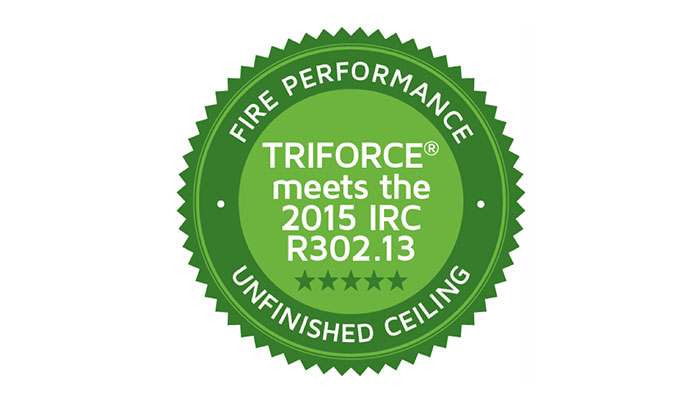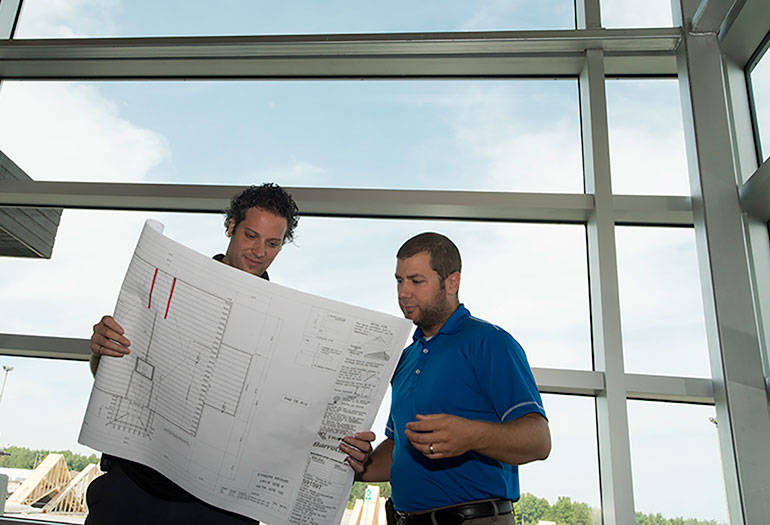
TRIFORCE® has been designed to meet fire-code requirements for different building types. In this section, you will learn about all the different options that are offered to the construction market in terms of fire and sound performance.
For residential construction, TRIFORCE® is the least expensive way to meet IRC R302.13 fire-code requirements for unfinished basement ceiling applications.
In addition, TRIFORCE® offers many different assemblies to meet multifamily buildings fire code requirements offering 45 min, 60 min, 90 min and 2-hour assemblies. These assemblies are also used as part of your sound requirements in those applications. All TRIFORCE® testings were conducted by independent laboratories.

Public awareness about the fire safety of engineered wood floor joists has grown exponentially in the past 15 years. Tragic incidents involving rapid collapses of “I” beam type joists during residential fires shocked the public and fire authorities. Engineered wood joists weren’t fire-resistant. Later, the International Code Council established engineered wood fire performance requirements for … Continued

How about a little bit of joist history? Currently on the market, there are essentially three different types of engineered floor joists Wood I-Joists Steel plated floor trusses Finger-jointed and glued floor joists Wooden I-Joists They’ve been around for nearly 50 years, having been invented in the late 60’s. They get their name from their cross-section, … Continued

Anyone who has lived in a multi-unit building with noisy neighbours can appreciate the effects of sound transmission. Since the 1990’s the International Building Code has included requirements for sound performance, to help guide architects and contractors in building better sound attenuation performance into their constructions. This evaluation is done on two distinct types of … Continued